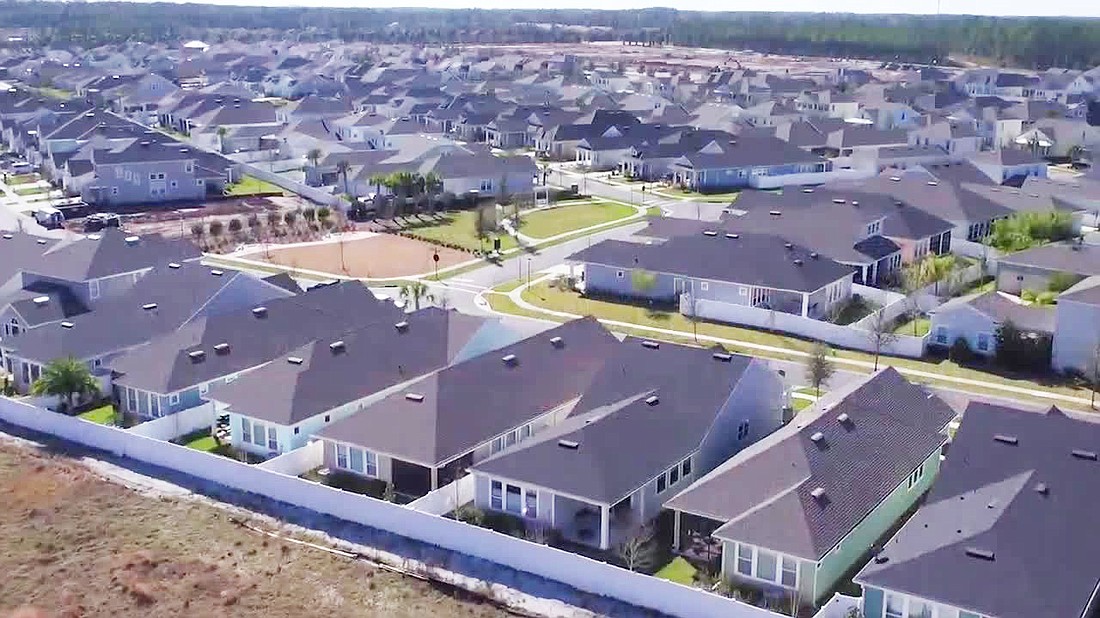
While development in Northern St. Johns County is still strong because of the proximity to Jacksonville’s employment base, things are improving for the rest of the county.
The county is seeing increased residential development and job growth in its central and southern portions along the Florida 16 and 207 corridors, says Suzanne Konchan, director of the St. Johns County growth management department.
“Now it is becoming more balanced,” even though the numbers are still more robust in the north, she said.
“We are seeing not only an uptick in residential, but an uptick in commercial and office development,” Konchan said. “Fast-food retailers are coming to all of our interchanges, including Florida 16 in a big way.”
Residential growth in St. Johns also is attracting retail development.
“The general sense of people who live here in St. Johns County is we are underserved in terms of retail,” she said. “A lot of people drive out of the county to do their shopping so we are thankful to see more retail coming in.”
Konchan said the county would like to have more office and industrial development. She said a lot of county property is zoned for industrial with the entitlements in place, and she has been fielding more questions about it lately.
Konchan said the county was thankful for construction of the new PGA Tour corporate office, the expansion of Northrop Grumman and the addition of a rail hub at Northeast Florida Regional Airport.
The county promotes specific types of development by ordinance, administered by the county Economic Development Department. It provides incentives that focus on target industries bringing high paying jobs to the county by acting like a rebate on impact fees based on the new jobs created.
Residential growth has created a draw for more retail. It is a continuous circle of development.
Konchan said the county is meeting with developers, land use attorneys and homebuilders for ideas on how to attract affordable housing and is exploring tools to create a variety of housing types.
She said the county has programs allowing developers to offer affordable homes to build denser communities, but developers aren’t taking advantage.
Because the median income in St. Johns County is high, a home could sell for more than $280,000 and still be considered moderately priced by the state.
“We are not seeing the market offer below the $200,000 price point,” Konchan said. “Our discussion focus is targeted (on that) as well as the rental market and low-income rental market, which is a tough nut to crack.”
The county is considering incentive-based zoning or an affordable housing zoned district to allow for smaller lot sizes and different development standards without requiring developers to undergo entitlements for planned unit developments.
One example would be a community with deed restrictions that would establish a cap on home appreciation. Also, homeowners could only sell to someone who met qualifications for affordable housing.
People buying those homes would have “no other option at that price point. Either you buy that home, you get to build equity and have some appreciation, or you don’t live here.”
Konchan said that type of housing program is available in other parts of the country, like San Francisco, where low-price housing options do not exist. But a program like that may not be right for St. Johns County, she said.
Konchan said another way to improve affordability is through code adjustments.
“Our code allows homes to have a second unit for immediate family members,” she said. “We are looking at whether it is appropriate for the county to look at lifting that restriction” so people can rent it and contribute to available affordable housing.
Konchan said the county’s apartment rental market, with low vacancy, is attracting new construction. “A few more than we have had in years,” she said.
Impact fees and density caps were barriers to apartment construction in the St. Johns, so in 2018 the county scaled back impact fees so smaller units pay less.
“We are definitely seeing the market embracing the apartment product here, which is good, we need it,” she said.
Most of the 4,500 homes built in the county last year were planned and entitled before the recession. Now inventory is low and developers are seeking comprehensive plan amendments and rezonings on new properties.
“About 80 to 90% of those projects go through without much fanfare, but there is 10 to 20% where there is community interest, strains on infrastructure or outstanding issues” that generate a lot of attention Konchan said.
Age-restricted community proposals have increased in the past three years. Some are whole neighborhoods and others are pockets in communities, Konchan said.
The Greenbriar Downs community changed to age-restricted in response to school capacity in Northwest St. Johns.
She said in the Northwest all the schools are at or over capacity and school impact fees in the area can range from $12,000 to $20,000 per home.
With the rising cost of housing and new jobs comes the demand for places for workers to live. Konchan said she has been investigating affordable housing now more than she has in her 10 years with the county.